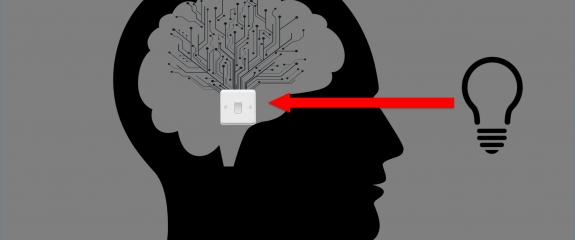A thought's fleeting trip through the brain

It is an interesting question - how does a thought pass through the brain?
It is possible to use electrodes to record brain activity and placing electrodes directly on the cortical surface (ECoG) permits a much clearer view of thinking activity. It is possible to record how the prefrontal cortex coordinates the brain's response to a perception. In a recent study (here) neuroscientists report on how they tracked brain activity in 16 patients with epilepsy, looking how their brains detect, interpret and constructs a response to stimuli and how they activate motor areas to respond. It is clear that the brain prepares its response very early, even before we know just how we will respond. The findings show clearly how the prefrontal cortex at the front of the brain coordinates activity to help us act in response to a perception.
Monitoring electrical activity at the surface of the brain showed that a simple task, such as repeating a word that a subject saw or heard, showed that the visual and auditory cortex reacted first to the perceived the word. Neurons of the prefrontal cortex then kicked in to interpret the meaning, followed by activation of the motor cortex in preparation for a response. Observations showed that in the instance between stimulus and response, the prefrontal cortex remained active so that it could coordinate all the other brain areas.
When it was involved in a particularly hard task, such as working out the antonym of a word, the brain required several seconds to respond. In this time the prefrontal cortex recruited other areas of the brain including, it is presumed, memory networks not actually visible. Only then did the prefrontal cortex hand off to the motor cortex to generate a spoken response. The quicker the brain's handoff, the faster people responded. It was also apparent that the brain prepared the motor areas to respond very early, during initial stimulus presentation, suggesting that we get ready to respond even before we know what the response will be. Researchers suspect that this might explain why people sometimes say things before they think.
The model describing how brain activity is coordinated that has been pieced together over the past decades from studies in monkeys and humans appears to be reflected in these observations, particularly the key role played by the prefrontal cortex in coordinating all the activated regions of the brain. The various different experiments in which tasks ranged from simple, such as repeating a word or identifying the gender of a face or a voice, to complex, such as determining a facial emotion, uttering the antonym of a word or assessing whether an adjective describes the patient's personality. During the tasks, the brain showed four different types of neural activity.
All observations found a universal signature of activity centred in the prefrontal lobe that links perception and action. Initially, sensory areas of the auditory and visual cortex activate to process audible or visual cues. Subsequently, areas primarily in the sensory and prefrontal cortices activate to extract the meaning of the stimulus. The prefrontal cortex is continuously active throughout these processes, coordinating input from different areas of the brain. Finally, the prefrontal cortex stands down as the motor cortex activates to generate a spoken response or an action, such as pushing a button. It might therefore be considered the glue of cognition and guides a perception into an action.
Recording from several hundred electrodes placed on the brain surface, ECoG appears to provide a more precise technique of monitoring the thinking brain than traditionally used functional magnetic resonance imaging (fMRI) and electroencephelography (EEG). The electrodes record and detect activity in the thin outer region, the cortex, where thinking occurs. ECoG provides better time resolution than fMRI and better spatial resolution than EEG. However, this technique requires epilepsy patients to undergo highly invasive surgery, which involves opening the skull, to implant electrodes to pinpoint the location of seizures.
The present work is possibly the first step in understanding how people think and how they decide on one of many possible different reactions; how people basically behave.


